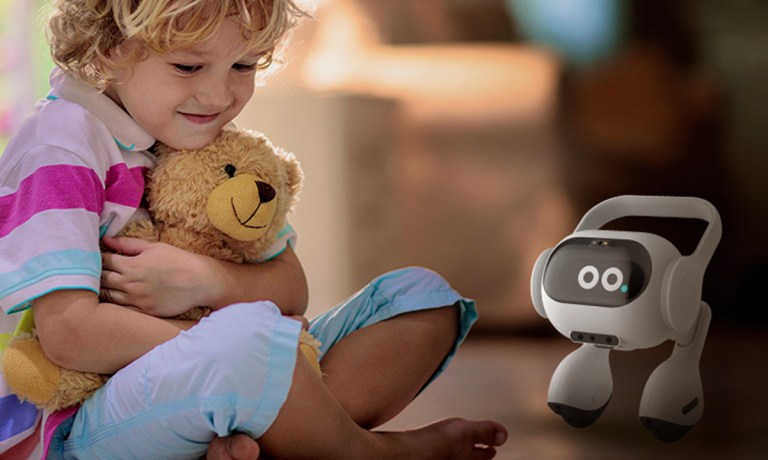Robots Join CES Exhibits as Next AI Evolution

Just a week ago, the smart money was on artificial intelligence to dominate the Consumer Electronics Show. But someone forgot to tell the robots.
Because when the show opens on Tuesday (Jan. 9) in Las Vegas, robots will literally be roaming the aisles and stealing some thunder from some of the more practical uses of AI in the connected economy.
In fact, just two weeks after LG announced a “smart agent” mini-robot that interacts with simple verbal commands and patrols a home when its empty for wasted electricity and energy adjustments, a Chinese company called Kepler Electronics one upped it with a life-sized (5 feet 10, 187 pounds) “Forerunner” robot.
According to the press release, Forerunner features an “intelligent and dexterous hand” and 40 degrees of movement in its limbs and upper body, which should enable it navigate outdoor terrain, avoid obstacles, lift and carry heavy loads, use hand-eye coordination, and what the company calls “intelligent interactive communication.” While the $30,000 price tag may be a bit steep for a non-automotive consumer product, Kepler is expecting industries from manufacturing to logistics to education to landscaping to be potential customers.
Kepler CEO Debo Hu is ambitious — to say the least — about Kepler’s market reception.
“The Kepler Humanoid Robot is dedicated to revolutionizing productivity with cutting-edge technology, hastening the arrival of a ‘three-day work week.’ The shift will enable humans to dedicate more time to meaningful endeavors, such as space exploration,” Hu said. “Our goal is for the Kepler robot to be the trailblazer in landing on the exoplanet Kepler, paving the way for a second home for humanity.”
Space travel aside, Kepler is positioning its product in two ways, first as an alternative to Tesla’s Optimus 2 robot, which debuted in mid-December. The reception for Optimus was less than stellar, with most comments focusing around the robot’s clumsy gait and awkward movements.
Kepler claims to have solved this issue through better internal AI-driven software and physical mechanics that allow its engineers to build more torque into the robot’s moveable joints. It is also positioning the Forerunner as the logical evolution of NVIDIA’s concept of “embodied AI,” in which robots can “perceive, reason and interact” with the physical world.
Read more: CES Adds Momentum to Consumer AI Push
Kepler will not be alone in Las Vegas. In addition to LG’s announcement, the following companies made their robotic plans public this week:
Orbbec, a manufacturer of 3D vision systems, will launch its Gemini 2 XL, which it is aiming at a variety of robots and numerous AI-based video analytics and interaction systems. The company says the Gemini 2 XL is a long-range, 3D camera that delivers accurate and reliable data in various lighting conditions from pitch black to outdoors.
KEYi Tech, another Chinese company, will exhibit Loona, a new version of its “ClicBot” pet that blends technology and pet behavior in the design. The company is positioning Loona as several things: a toy for various interactive games, a moveable home monitor, and a programming learning platform. The company says it is the world’s first consumer robot equipped with ChatGPT, which will enable natural human conversation and unlock new companionship possibilities. It took one of the show’s 2024 Innovation Awards.
Got bubble tea? Yo-Kai Express has debuted ramen-making robots in the past, and CEO Andy Lin told The Spoon that the company’s new robotic boba maker will be the first boba-bot that incorporates a cooking pot inside the appliance, enabling it to cook boba tapioca pearls as well as other toppings.
According to Lin, the machine’s built-in cooking capability will allow it to create a variety of different hot and cold beverages and meals ranging from instant oatmeal to protein shakes to soups and coffees. Netflix has reportedly ordered one for its corporate headquarters.
While it will undoubtedly take more than one CES event for robots to shake their status as a novelty, AI-driven machines are finding more practical albeit, limited, uses.
For example, as featured in Wired last week, LuxAI is gaining traction with a smaller robot called QTrobot. So far that traction has come in the autism education area, but it is also being rolled out for elder care.
According to LuxAI, studies show QTrobot can improve the learning outcome of children with autism by increasing attention levels and engagement. Studies also show that children display less anxiety and fewer stereotypical behaviors when sessions are offered by QTrobot compared to a person.
QTrobot is just starting to be used in elder care. According to an academic paper delivered in August, the use of robots in elderly care represents promise in home-based health care. The researchers quoted in the paper experimented with the QTrobot in various interactive scenarios and monitored the physical and emotional well-being of the elderly through specific sensors that measured vital signs, with real-time updates relayed to physicians and assistants, adding to the timeliness and effectiveness of their care.
“QTrobot,” the report stated, “can address the complex health management issues of the elderly, monitor their health, and provide assistance in daily activities. In addition, by integrating a variety of sensors, QTrobot can promptly detect changes in the health status of the elderly, alert caregivers or indicate medical anomalies, and prevent risky situations.”